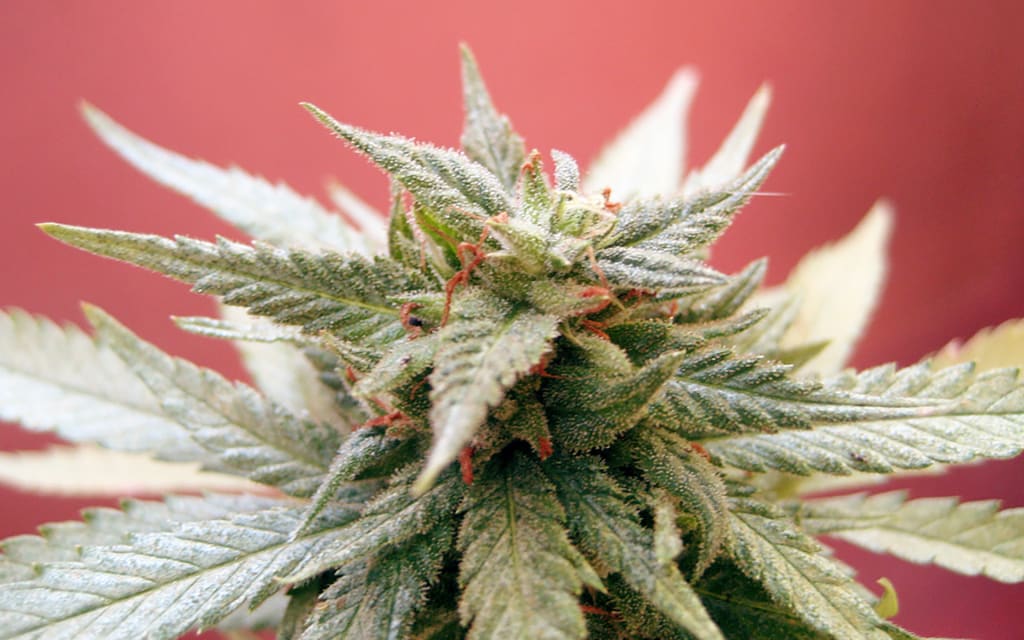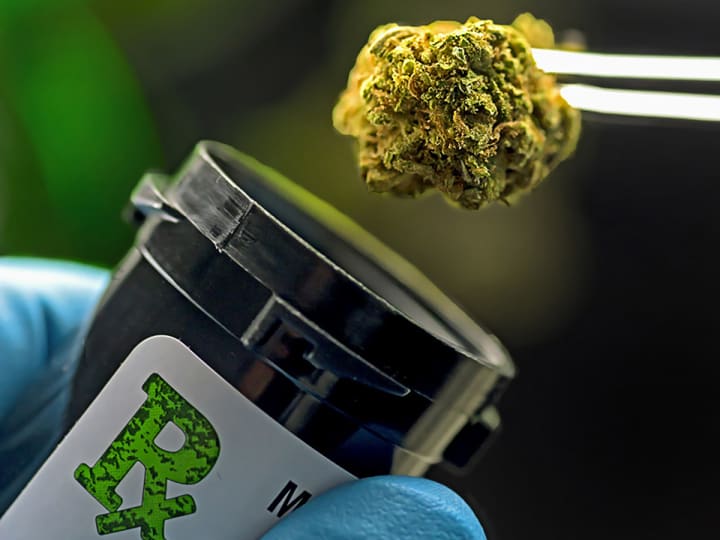Delta-9 THC Health Benefits
Pure research on Delta-9 THC health benefits began in 1968, after it was isolated and identified in 1965.

Marijuana grows and propagates differently from every other plant in the world. It determines its sex differently, it buds and flourishes, dies and decays, cures and burns a little differently than any other vegetable. The belated discovery of marijuana’s organic complexity was preceded by an ancient and rich history of its usage. Delta-9 THC was isolated in 1965. It's the THC that gets you high, of this nearly everyone agrees, and it also appears to be responsible for most of the other physical effects that follow marijuana ingestion. Weed lovers learned about this almost as soon as the government botanists isolated the stuff, so that nowadays an online industry exists to facilitate by means mechanical and agricultural the extraction of THC out of pot or the cultivation of high-THC strains of marijuana. In 1968, pure-THC studies started demonstrating the two most immediately conspicuous systemic effects of the drug: changes in the eyeballs and in the stomach. By mechanisms that remain a perfect mystery, pot dependably causes a visible reddening of the eye-whites by congesting the conjunctival lining at the edges of the eyelids, and also it works somewhere in the brain to settle the stomach and eliminate nausea.
Antiemetic Effect

The antiemetic effect of marijuana was first studied unofficially and independently by doctors all around the country in the late 60s, when powerful and horrific "drugs" like mustard concentrates and platinum came into use to treat cancer patients. Nearly all chemotherapy preparations induce spectacular seizures of vomiting, retching, and dry heaving that can continue in wracking spasms for days and weeks. The nausea induced by these treatments can be intensely uncomfortable.
There are no solid indications of when pot's antiemetic properties began to be recognized by chemotherapy experts. Chances are that it was the patients who first began to bring the subject up, those who smoked dope. Chemotherapists in the 60s were pretty much in agreement that only Compazine, a sedative, was of any use at all against the nausea they were necessarily inducing in their patients. Compazine only worked for a few days, and only feebly at that. Other conventional tranquilizers and antiemetics have had the same results. But word started getting around about cannabis in the early 1970s. It was a long time though, getting into the medical literature and research labs. Until the turn of the century, many a medical practitioner was scorned or even jailed for offering marijuana to chemotherapy patients.
Treating Glaucoma

The most salient chronic symptom of glaucoma is pain within the eyeball, caused by increased pressure of the aqueous and vitreous fluids; The cause of the disease is unknown and no cure is available. Blindness in one or both eyes is generally considered inevitable, though it can be greatly delayed and the pain can be greatly alleviated by drugs that reduce the pressure of the eye fluids. The problem is that many of the drugs that exist for this purpose have progressively debilitating side-effects, contributing to the formation of cataracts, detachment of the retina, and so on. Marijuana, though, reduces eyeball pressure like a charm, up to 70 percent in most cases. People who smoke it for this purpose appear to enjoy a steady, dependable alleviation of pain without increasing their intake of reefer over a period of time, or at least that's what many have told Stone Age and other observers.
Acts as an Antihistamine

THC is an antihistamine, too; It directly inhibits the action of the brain enzyme histamine, reducing inflammation and swelling nose and throat tissues brought on by allergic reactions to everything from pollen to cat hairs. It works on the heat-control center of the brain to reduce fever, much like aspirin. Moreover, THC conspicuously reduces the level of hydrochloric acid in the stomach and could come in very handy at forestalling ulcers. The doctor at the University of Maryland who discovered this, in the course of chemotherapy studies, warns that in normal people a reduction in stomach acid could make them more susceptible to bacterial assaults on the Gl tract, an occasional hit of alcohol will immediately restore normal acid balance, but it's unwise to drink a lot of booze with grass, because they interact badly in the liver.
Sex and Ganja

Weed and sex research could probably tell us more about ourselves, the way we work, and what we are than nearly anything else you could think of. In Canada they seem to be a little less uptight about the idea. Dr. Cannie Adamec of Toronto studied the social effects of grass on men and women strangers, comparing them with control groups of men and women friends. She noted, among other things, that the men in the group of strangers, once stoned, had considerable difficulties in achieving secure interpersonal contacts: They typically felt isolated, nervous, self-conscious, and, in a few cases, decidedly depersonalized. In the group of women strangers, contrariwise, the girls found themselves achieving quick, effortless and profoundly intimate communion with each other, getting into rap sessions wherein they discovered things about themselves, their lives and the world in general that they had never consciously considered before.
Dr. Adamec's experiment was structured so as to eliminate any influences the environment itself may have exerted on the reactions of the volunteers. Cultural expectations of the subjects as to what they would experience once stoned was severely minimized. These people went into the experiment cold, and the results indicated persuasively that there is a fundamental difference, primarily psycho-physiological, in the way men and women react to marijuana. The nature of that difference has had historic effects on our understanding of sex, love, and the nature of consciousness itself.
Developing a Tolerance

Anyone who ever smoked weed for recreational purposes remembers his or her honeymoon with the stuff, right? For the first month or two of regular daily toking, the intoxication is vividly experienced, all sensory phenomena seem unprecedentedly immediate and powerful, minutes stretch into hours subjectively, new levels of profound intuition are experienced and grasped forever, and after that you gradually calm down and just do the stuff to get high. This honeymoon represents the introduction of your body to the effects of marijuana. Do not confuse it with "tolerance," which is an open-ended adaptation of the body to a drug and the development of a physical need for it. By closely observing the effects of regular use, you get a more profound apprehension of how weed works in glaucoma, antiemetic effect, and a myriad of other areas.
The seminal study was done by Drs. Sidney Cohen and Robert Nolan at UCLA in 1977, only 12 years after the discovery of Delta-9 THC. Briefly, they brought together 30 male weed users. Pot volunteers had to be experienced, live in a dormitory, and withheld weed for 11 days, so as to "detoxify" them at least minimally. After that, they were given one test joint every morning and allowed to smoke pretty much all they liked during the afternoon and evening, for 64 days straight. At the beginning of the smoking period, after the 11-days' abstinence, their pulses shot up like crazy, from a mean rate of 70 beats per minute (bpm) to 90, on the average.
"Our experienced smokers," Drs. Nolan and Cohen noted, "were unaware of any change in heart rate and were often surprised at the magnitude of the change." Along with conjunctival reddening, heart acceleration—"tachycardia"—is one of the very few perceptible physical effects of grass smoking, and the UCLA shrinks found that it precisely coincided with the intensity and duration of the volunteers' subjective highs.
By the ninth and last week of smoking, the tachycardia effect had mellowed down to 85 bpm peak average, with a corresponding reduction in the perceived intensity of the high. All effects of the marijuan, mental and physical, had been stabilized for two weeks beforehand. Then the docs took the subjects off pot for another week—some got a little cranky at this, but after all, they'd been stuck in a dorm for three months now—and then let them smoke ad lib for nine more days. Results were identical: Your body does adapt to regular marijuana smoking, and so does your mind, though only to a point.
About the Creator
Sigmund Fried
Not his real name, but he wishes it was. Wasted, waxing philosophical.






Comments
There are no comments for this story
Be the first to respond and start the conversation.